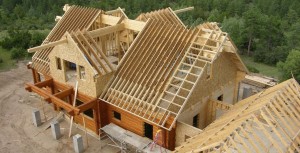Kirk Smith’s company 4K Construction are professional builders from Liverpool, Merseyside, United Kingdom. Please visit
Article Source: http://EzineArticles.com/?expert=Kirk_Smith
Repairing Cracked Concrete Driveways and Walkways
Repairing Cracked Concrete Driveways and Walkways
By Max Sheppard
A number of factors may cause concrete to crack. These include the ground underneath shifting, extreme fluctuations in heat and cold, too much weight being applied, and other things.
Cracked concrete is not only unsightly, it can be dangerous. A crack may be wide enough to cause someone to trip, which can result in serious injury. Anyone who has ever fallen off a bicycle onto pavement knows how painful such scrapes can be. Additionally, hitting such a hard surface can cause a broken bone, or, if one hits one’s head, a severe concussion.
If the ground has shifted underneath the concrete, and the concrete is not only cracked, but has also become uneven, this can be even more hazardous. If a car is driven over an uneven surface, especially at a fast speed, it can actually cause tire or undercarriage damage.
It is possible to repair cracks in concrete without having to have the entire driveway or walkway resurfaced. The cracked area should first be cleared of all loose concrete, then cleaned with a strong blast of water from a hose. In this way, the new concrete will adhere to the surface better.
Next, a layer of concrete should be applied to the damaged area, and smoothed with a trowel. Then a second layer should be added BEFORE the first layer has been allowed to dry.
The area should be inspected, and any missed spots filled in. If desired, a clear sealant can then be applied for additional protection and ease in subsequent cleanings.
If one does not feel comfortable, or does not have the proper tools with which to perform the work, a professional concrete contractor can be hired. However, it may be more cost-effective to have the entire driveway or walkway re-surfaced if this is done, as “piece work” may actually cost more than a “big” job. One will simply have to obtain estimates on both services, then make the a decision.
Visit Handy American for more DIY articles and access to professional local contractors.
Article Source: http://EzineArticles.com/?expert=Max_Sheppard
http://EzineArticles.com/?Repairing-Cracked-Concrete-Driveways-and-Walkways&id=2252304
Foundation Problems? You Need To Know
Why is my foundation cracking? Poor design? Incorrect materials? Expansive Soils? Workmanship problems? Plumbing Leak underneath the slab? Property Insurance Claim?
Every year, thousands of home foundations crack, warp, buckle or fail. Yet many homeowners do not know if their foundation has a problem or if it truly needs repair.
Get the facts. Call us. Because you need to know.
Toll Free: 866-440-0003
 Structural Opening – Knocking Two Rooms Into One and Fitting a Steel RSJ
Structural Opening – Knocking Two Rooms Into One and Fitting a Steel RSJ